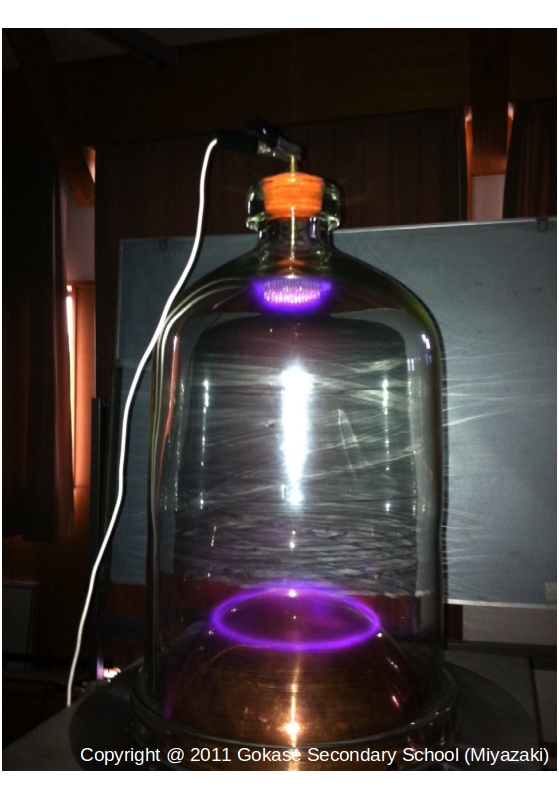Welcome to Scientific Aurora Guide in Sweden!
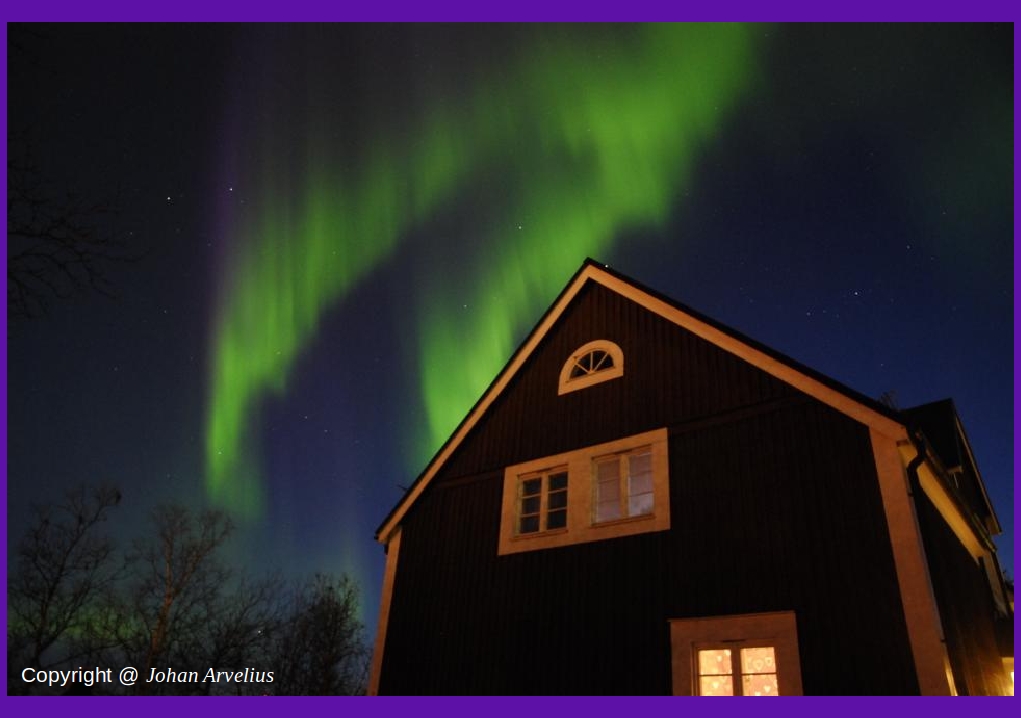
Aurorae or polar lights are the natural phenomena which attract and fascinate people, regardless of all ages. On our Earth, you can watch aurorae in the both polar regions (therefore, "polar lights") because the geographic North/South Poles are not so far away from the geomagnetic North/South Poles, respectively. In the Northern hemisphere, aurora is called as Aurora Borealis and Aurora is the Latin word for dawn, and the goddess of dawn in Roman mythology and Latin poetry.
Overview
The solar cycle 24, the current phase of the solar activity, is in the descending phase and thus it is said that it will be difficult to watch and observe aurorae... NO! In the Auroral Zone, you can always watch and observe aurorae, if it is fine weather ahead you.
The following figure shows you the difference between the Auroral Zone and an aurora(l) oval. The Auroral Zone is the zone where you can see aurorae frequently (i.e. more than 30%) statistically, while aurora oval is a snapshot of overall picture of aurora and seen only from the space. Aurora oval usually has a narrow band (in latitudinal direction) and is located at higher latitudes in the dayside, and has a broader band (in latitudinal direction) and various every moment in the nightside. As you see in the figure below, the average band width of aurora oval in the night side overlaps the width of Auroral Zone.
In Sweden, the southmost edge of the Auroral Zone lies around Umeå (~63°N). Theoretically you can see aurorae in Umeå, but please give a careful glance on the figure below again. An aurora oval tells you that the band around 18:00 (the border of day to night and the left side of the figure) - 21:00 (45 degrees counter-clockwise from the day-night border and the left side of the figure) is not broad enough and that means Umeå is out of the Auroral Zone during this time zone. On the other hand, Kiruna is located middle in the Auroral Zone and thus one can see aurorae from early time such as 18:00 in principle.
By the way, although the average latitudinal width of the night side's aurora oval matches the Auroral Zone, the shape of aurora oval changes from moment to moment and by external conditions. For example, when the external condition that is geomagnetic storm is applied, both the scale and the width in latitudinal direction of aurora oval usually expands. Even though depending on the scale of the geomagnetic storm, the aurora oval extends beyond the Umeå, and one can see aurora over Stockholm (60°N) and/or further in Malmö (55°N). The external conditions such as geomagnetic storms, however, are strongly related to and dependent on the solar activities that are non-stationary ones.
How you can watch and observe aurorae steadily and certainly? We give you a tip: Across the Arctic Circle and go to Kiruna. And, the following you will find our services.
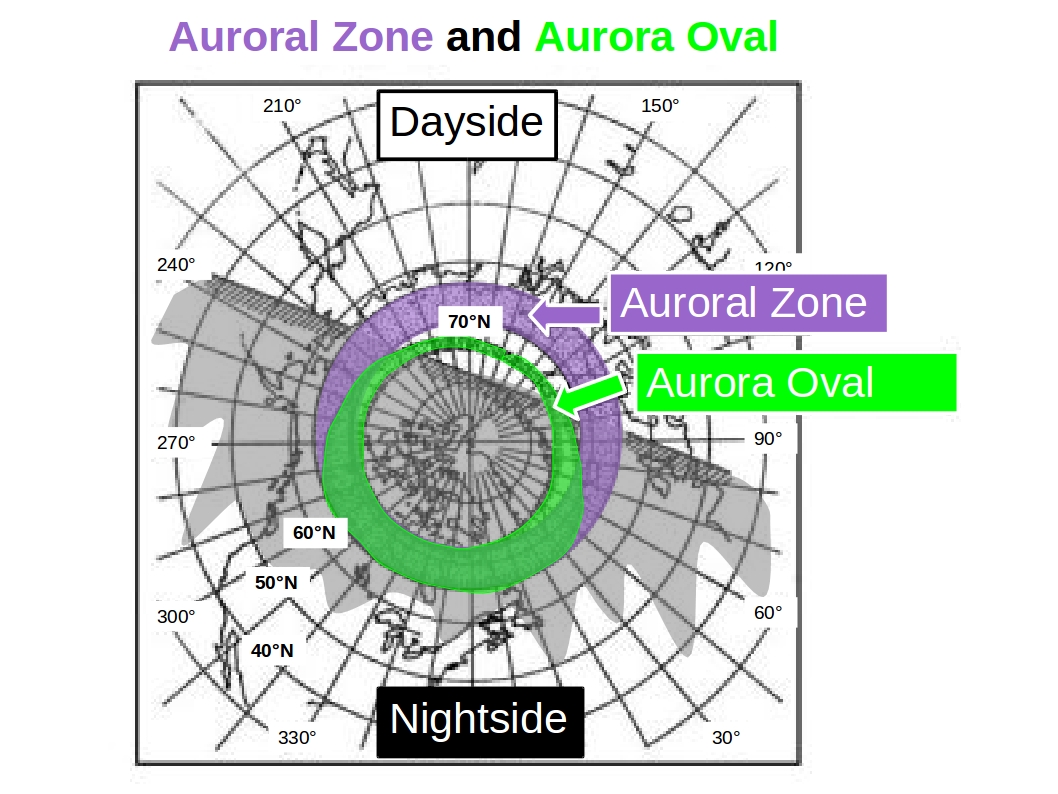
My expertise — Space Physics and Aurora
That of seeing the aurora is not good or bad luck, is something that can be reliably achieved by science. When you tell about "good luck" on aurora, it is to encounter aurora break-ups or unusual aurorae such as proton aurora arc.
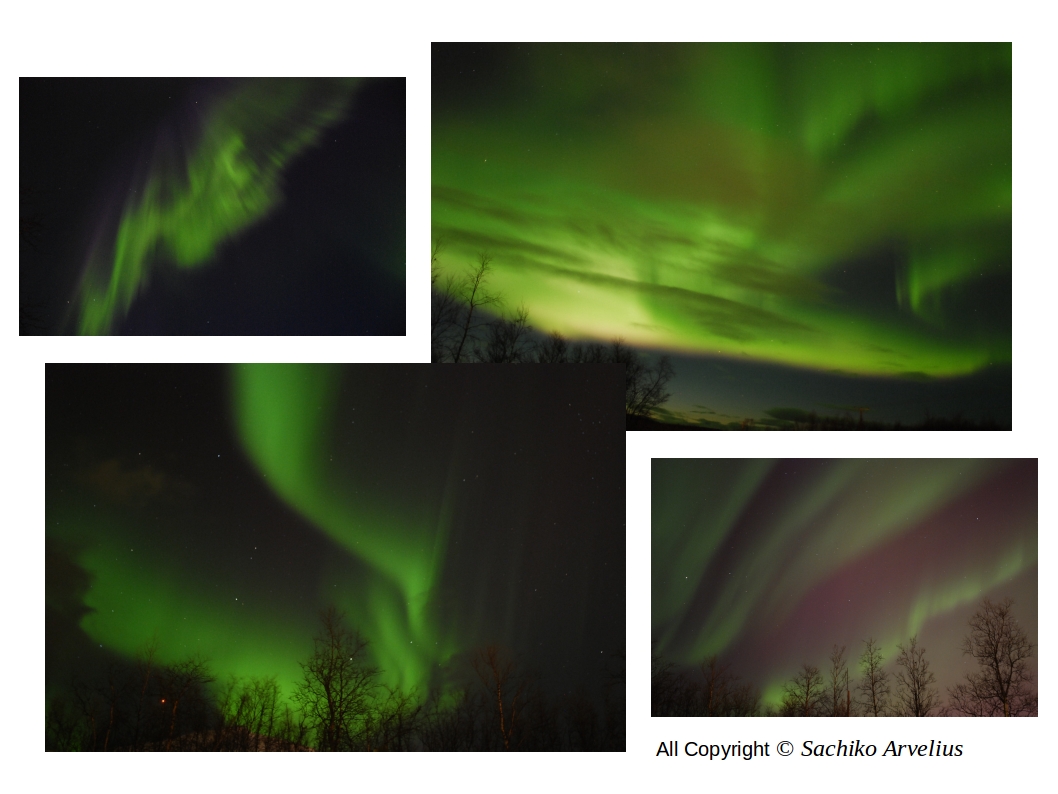
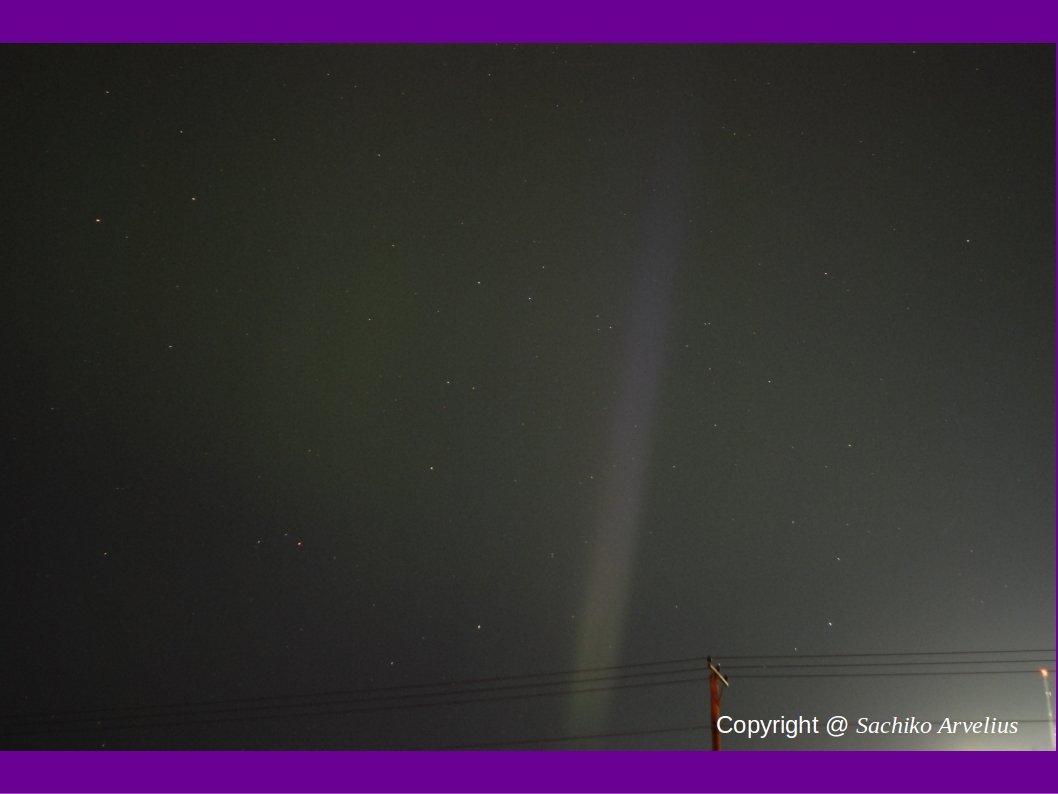
The following animations show a typical moderate aurora over Kiruna. When you look up the north of the night sky through 20:00 to 21:00 LT, you will wittness such aurorae like "shining green curtains swaying in the wind". Our services support you to watch and observe various aurorae, from moderate ones to spectacle ones.

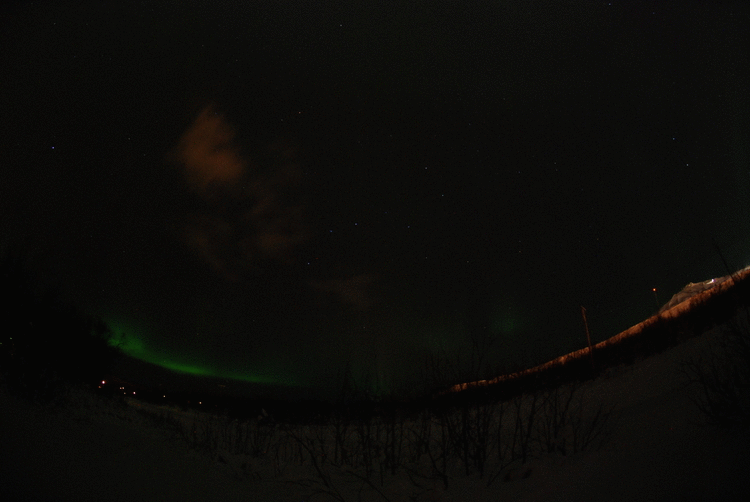
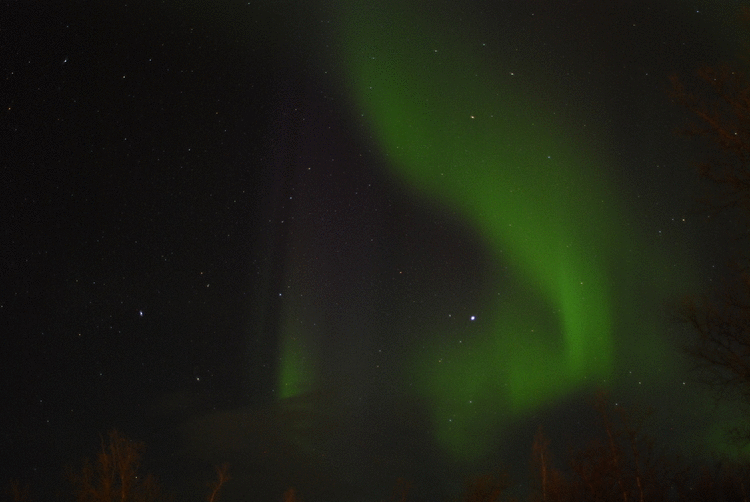
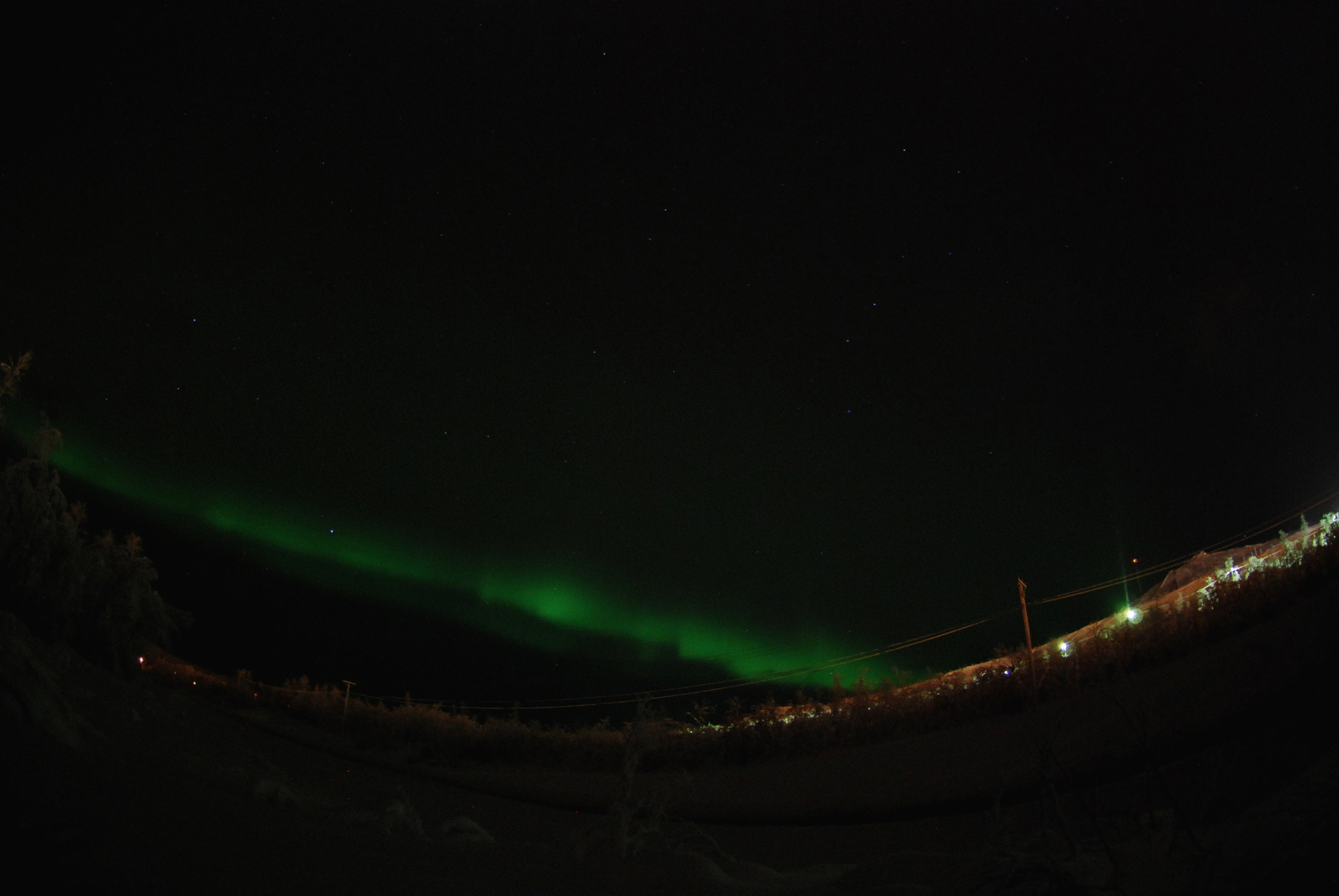
The person describing this Scientific Aurora Guide is Sachiko Arvelius, and I am a space physicist holding Ph.D. in space physics.
My original expertise is Sun-Earth interactions: Our Earth is like a large bar-magnet and the bar-magnet forms magnetosphere around the Earth. The magnetosphere protects us from fatal ionising radiation coming from space and the closet and largest source of the ionising radition (usually, it is called space plasma or simply plasma) is our Sun. How do energetic plasmas from the Sun affect the Earth's magnetosphere and How does the Earth's magnetosphere react against the energetic plasmas from the Sun are research themes in Sun-Earth interactions (and dynamics).
The seed for aurorae comes from the Sun as solar wind. The solar wind consists of plasmas and solar magnetic field. When the solar wind hits the Earth's magnetosphere, the Earth's magnetic fields consiting the magnetosphere react against the impact, and the part of the reaction appears as aurorae in the polar regions.
I have studied the dynamics and the fate (in more profesionally rephrase, the distributions of energy and momentum) of atomic oxygen ion (O+), the representative terrestrial-origin plasma, in the outer magnetosphere. Thanks to the data of plasma instrument aboard the spacecraft, Cluster-II (The Cluster-II Mission), I have revealed unprecedented characteristics of high-altitude and high-latitude outflowing O+, and this indicates partly the Sun-Earth interaction/connection.
Doctoral Thesis of Sachiko Arvelius
Aurora Expectation and Aurora Forecast
There are Aurora Expectation and Aurora Forecast that I can provide you, and these two are different.
The aurora expectation is a process that starting with (1) analysis of solar wind data and the events that are going on the solar surface, then followed by (2) investigation of the influence of the sun, such as solar wind gives what effect on the Earth's magnetosphere, and finally (3) proposing whether aurora comes out or not on a global scale. As you can see, this process has been the only target those of a global level, does not depress until the presence or absence of of auroral appearance of the place you want to look at (event of the local level). To begin with, only the data on which to base can not discuss the events of the local level. Therefore, it is just an expectation of whether aurora comes out or not on a global scale.
For aurora forecast, on the other hand, I will concentrate in the relevant data (geomagnetic field data at the moment. In the future, however, simulation and the calculation results using the local geomagnetic field model can be compared with the actual geomagnetic field data) in a place you want to look at aurora, using also the statistics that shows the correlation between components/strength of the geomagnetic fields and the attitude of aurorae, in order to calculate when and where (directions) does aurora come out.
Aurora Expectation
To do expectation 'within 3 days' in prior to the observation,
(1) I first gather the data of solar surface events (solar flares and associated coronal mass ejection (CME), and furthermore appearance of co-rotating interaction region (CIR)), as well as analyse the solar wind data.
(2) Then, I deduce an aurora expectation of forthcoming 3 days.
What is CIR?— The sun for blowing solar wind, is considered as a sprinkler with rotating watering hole to watering the lawn (see figure below). However, unlike such a sprinkler which provides a certain amount water from determined watering ports, the sun will blow out the solar wind that is continous but not constant. Therefore, the solar wind becomes dense or sparse in terms of the plasma density, also fast or slow.
A "fast" solar wind is blowing just after a "slow" solar wind blows, then the "fast" solar wind catches up the proceding "slow" solar wind and it may increase the speed of the "slow" solar wind. Therefore, the region where the solar wind speed get increased due to the least "fast" solar wind is called CIR (co-rotating interaction region).
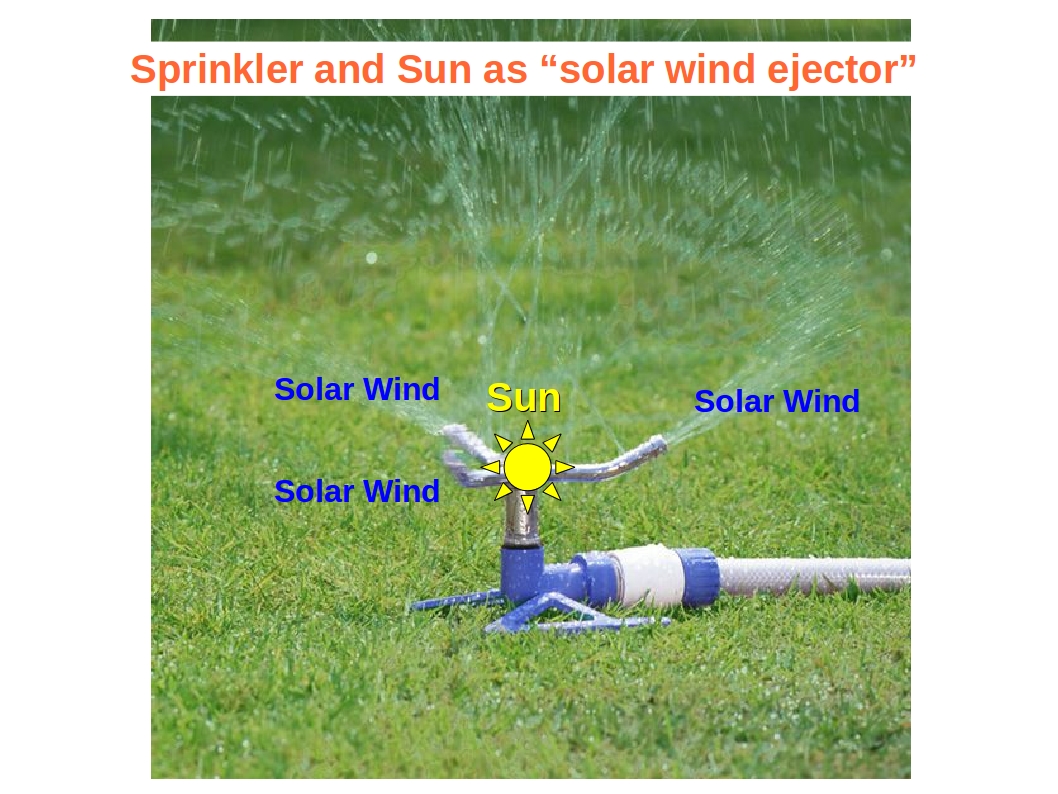
Why 'within 3days'?— This is because the Sun (precisely, the surface of the Sun) is very changeable. Especially during the period, so-called Solar Maximum, you can see many sunspots on the solar surface, and these sunspots are really the causes of solar surface "explosive" events such as flares and CME. If you catch the signal that a big solar flare has been hurled right now, X-ray, γ-ray and other electromagnetic waves (UV and radio) can reach Earth almost immediately (only 8 minutes time delay), while the plasma particles take time, at the fastest case (assuming 900 km/s for speed of the plasma particles) about 46 hours, to reach Earth. With the plasma particles solar magnetic fields are accompanied and the solar magnetic fileds upset the Earth's magnetic fields (geomagnetic fields). The upset geomagnetic fields react sometimes "immediately" and sometimes "in two or three days delay".
Aurora Forecast
On geomagnetic storms that are a very (sometimes extremely) disturbant state of the geomagntic fields and also the "direct" cause of active auroras, the recent reaseach shows that it is theoretically possible to predict the "9-12 hours before" of sudden commencement of geomagnetic storm.
Why '9-12 hours before'?— According to the recent research on muons (or μ-particles, they are mostly the "secondary" cosmic rays in nature) as a precursor of geomagnetic storms (M. Rockenbach et al., "Global Muon Detector Network Used for Space Weather Applications", Space Sci. Rev. (2014) 182:1-18), the variation of cosmic rays (muons) due to the interaction between the solar magnetic field (or so-called interplanetary magnetic field, accompanied by coronal mass ejection, CME) and the geomagnetic fields can work as a precursor prior to 9-12 hours before the geomagnetic storm sudden commencement.
However, the real-time data provided by the "muon telescope" (to observe the cosmic rays from the ground), which is the core of the research, is not available at the moment. Therefore, to use muon data as the tool for aurora forecast is out of question at present. But it is possible to prepare a SMF (solar magnetic filed)-GMF (geomagnetic fields) coupled model to simulate dynamics/interactions of magnetic fields, from the global scale down to the local level for the future "real" aurora forecast, as soon as the "real-time" muon data are provided.
It should be noted, muon telescope (to be precise, Global Muon Detector Network) and with respect to its research, Cosmic Ray Experimental Science Team (CREST), Shinshu University: Global Mu-on Detector Network (GMDN) is recommended that you take a look, if you can read Japanese.
Therefore the "technique" of currently available Aurora forecast is as follows.
(1) First, statistical analysis of the past geomagnetic field data and keogram data will be based for the one aspect of aurora forecast. The correlation between disturbance pattern of the geomagnetic field (each component of, normally "northward","eastward" and "downward") and pattern of brightness and the appearance position (in fact, latitude) of auroral image that can be read from keogram will be taken. This analysis will be performed quantitatively and be quantified as database on "correlation of the geomagnetic field disturbance over aurora appearance". Therefore, by comparing the actual geomagnetic field data with the database, we can tell where (or which direction) aurora comes out.
Waht's Keogram?— As shown in the figure below, the all-sky auroral images taken at the same time is sorted of latitudinal direction (the "north" is under the sample case) (to this as the "vertical axis"), then arranged in horizontal direction (or "horizontal axis") in time order.
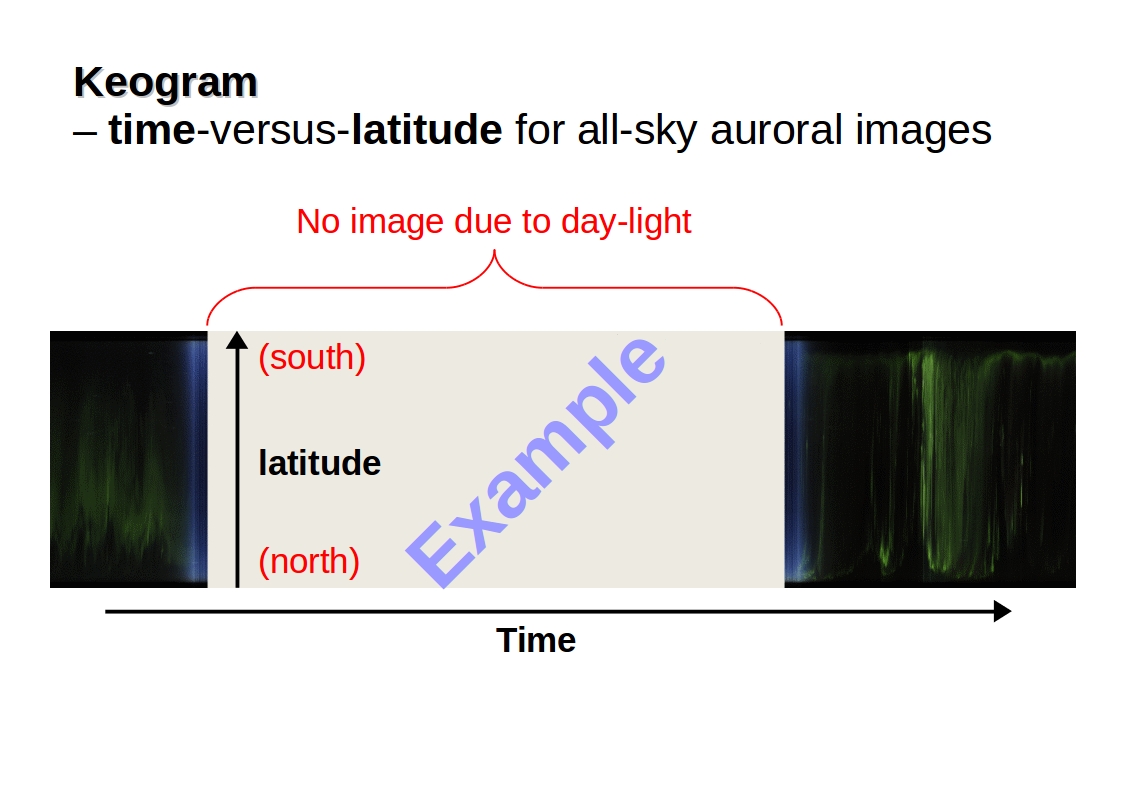
(2) Then, we predict when do aurora come out? from the time change of the geomagnetic field data. But, in fact, this will be the most "difficult" procedure. To begin with, there is nothing that set pattern to the time change of the geomagnetic field, If we have a "appropriate" solar magnetic field-geomagnetic field coupled model as described above, it can only be expected to simulate the time variation of the geomagnetic field. Currently, the combined model of the solar wind-outer magnetosphere exists. However, the characteristics of the "inner" magnetosphere is different from that of the "outer" magnetosphere, and the characteristics of the geomagnetic field in the vicinity of the ground is different from that of the "inner" magnetosphere. Therefore, the existing solar wind-outer magnetosphere combined model is NOT suitable for simulating the time variation of the geomagnetic field in a place that you want to watch aurora. So far, to predict "when aurora comes out" relies on an empirical method in which the expert comes to find something ("pattern") similar from the past geomagnetic field data and deduce.
Other current status
1. Aurora activity is strongly correlated to the disturbance of the geomagnetic fields. Since this is an obvious fact, the procedure of aurora forecast (1) (where (or which direction) aurora comes out) can be done with a high degree of accuracy.
2. Although to predict when aurora comes out is based on the "experience" as the expert for a while, a preliminary investigation for the model development to simulate the local geomagnetic field disturbances has been started.
3. The geomagnetic field data is sampled from only two locations in Sweden: Kiruna and Lycksele. But there is no all-sky aurora imager in Lycksele. Therefore, Scientific Aurora Guide will be performed in the limited area in Sweden: Kiruna, Abisko and Gällivare, all located in Swedish Lapland.
4. Fortunately, Kiruna is located in the middle of the Auroral Zone as has been described above, with the exception of the time of bad weather and the summer season (May-August), it will be every night to see Aurora roughly. In addition, the geomagnetic field data of Kiruna frequently shows a convex peak or concave depression in the vicinity near 18UT (universal time) and near 21UT. In that case, we witness a strong aurora without exception. This suggests that aurora can be seen almost in the time that was decided in Kiruna. In Sweden, 18UT = 7p.m. = 19:00 and 21UT = 10p.m. = 22:00 during the winter time (the last week of October to the last week of March).
Local Aurora Guide
(1) During the day time (10:00 - 18:00) and about 1 hour, we will hold a brief introduction (lecture) on aurora. In this introduction, we will demonstrate what conditions are required for generating aurora using laboratory aurora generator (see the picture below) The participants can do, of course, experiment with this equipment.
(2) We will advise and check the camera setting. (This is optional)
(3) During the night time (18:00 - 24:00), we will check the data and finalise/determine the location to watch and observe aurora. Usually, aurora can be seen from around 20:00 LT in Kiruna but it depends on weather. We will move to the ideal location as possible as we can.
Summary: About-1-hour introduction (10:00 - 18:00) and about-2-hour observation (18:00 - 24:00/26:00)
